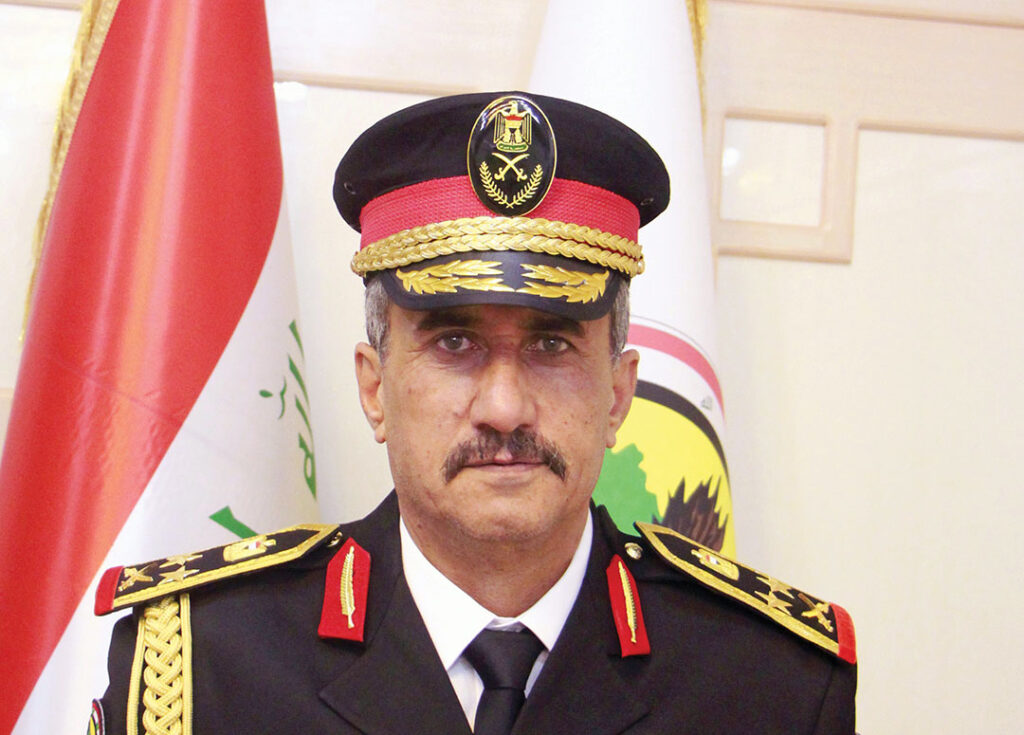Having spearheaded the manhunt for the remnants of Al-Qaeda in Mesopotamia as well as dismantling its networks and killing or capturing its leadership, the Iraqi Counter-Terrorism Service (CTS) has played a significant role in the fight against terrorist gangs and lawless groups since its establishment in 2003. Yet the role of CTS has not been limited to merely combating terrorist groups active in Iraq; it has also been tasked with other missions, including helping quell the 2006 sectarian violence. With the help of our United States Special Forces partners, the CTS has succeeded in forging a cohesive force capable of deploying modern military technology and employing counterinsurgency, anti-guerilla tactics.
CTS’s successes in the field are owed to the professionalism, patriotism, and drive of our Soldiers and is reinforced by the advanced training, guidance, and outfitting that it has received and continues to receive from U.S. partners who have worked shoulder to shoulder with the CTS through difficult years. It is in these difficult times that friends are tested.
After the Daesh invasion of Mosul in 2014, CTS emerged as a strategic fighting force that managed to hold its positions at Camp Ghazlani, Camp Speicher and the Baiji oil refinery, repelling the terrorists’ desperate attacks. Credit for that is owed to the selection process for Soldiers, their faith in their just cause, courageous leadership, a high level of training and equipment, and the great moral support we received from the Iraqi people.
CTS forces were at the forefront in the battles to clear cities of Daesh terrorist gangs. Once terrorists had entrenched themselves among the local population, clearing operations became akin to delicate surgeries requiring high precision and focus. To avoid civilian casualties, we were forced to perform assaults with lightly armed forces. Intelligence then became a key factor in the defeat of Daesh and other terrorist groups. In this regard we must commend the major intelligence-gathering role played by international coalition aircraft in addition to their primary mission.
Despite CTS’s ongoing pursuit of Daesh remnants and round-the-clock missions, it continues to sustain training and develop its combat capabilities at individual and unit levels.
Countering violent extremism is a complex process requiring root-level solutions to address causes. It cannot be addressed by militaries alone. After the great victory achieved by Iraqi Security Forces over Daesh, we began developing a counterterrorism strategy, holding conferences and laying out a strategy based on academic and scientific research to understand the true causes of violent extremism.
It is necessary to work with leaders and representatives of civil society as well as the public to prevent extremist thought from incubating or finding sympathizers in the community.
After long experience fighting terrorist gangs and hunting down their leadership, we found that the key to these missions is constructing an integrated, nimble and fast-moving force because terrorist groups rely on speed of movement and concealment. This makes hunting them difficult under traditional military methodology of target tracking and early coordination with the main forces of the military in the area that is to be targeted.
Fourth-generation warfare has imposed a new challenge on armies by using low-cost technologies to strike vital high-cost targets. Terrorists have focused on using small drones to target important military and economic installations. The availability of these technologies on the open market and e-commerce sites allows terrorist groups to acquire and modify drones to carry payloads and reconnaissance cameras, setting off an arms race between armies attempting to consolidate their air defenses against this emerging threat and terrorist groups developing these weapons to penetrate air defenses of regular armies.
In the fight for Mosul, we addressed those challenges by using electronic jamming tactics and close-range sharpshooting. As a result, drones did not constitute a tactical advantage for the enemy. However, the 2019 attack on oil installations in Saudi Arabia was a shock to the world and brought to light the acquisition by terrorist groups of sophisticated weaponry that threatens national security.
In the Saudi attack, drones traveled a distance of 100 kilometers, which indicates that this type of drone is both new and different from those faced in 2017. Other sponsors of terrorism could develop these weapons to carry biological or chemical agents to inflict heavy civilian casualties.
The world must aggressively come together to confront this challenge and hold accountable the states providing these kinds of technologies to terrorist groups. Just as we witnessed the international community’s response to Daesh, nations of the world concerned with combating terrorism must combine intelligence and pursue terrorist groups that use suicide drones to launch attacks against civilian and government facilities and hold accountable the countries that sponsor those groups and facilitate their access to such advanced military technology.
Friendly and allied countries must work hard to share intelligence to stop attacks. That includes countries working within a unified air defense system to protect vital installations and preserve air sovereignty.
Gen. Abdul Wahab Al-Saidi
Commander, Iraqi Counter-Terrorism Service

